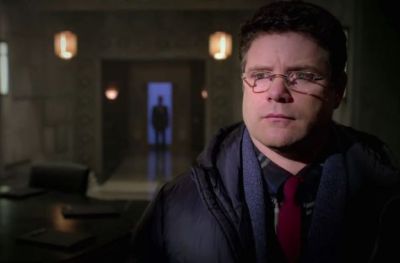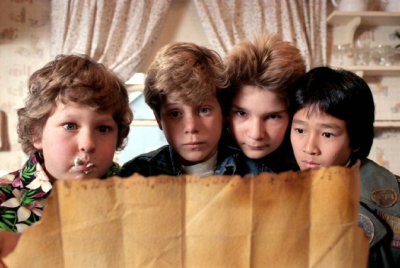Since its’ premiere on July 13, “The Strain” has taken Season 1 by storm. Where else can you fuse vampires and apocolypse and deadly viruses into one show? And we are not talking handsome romantic teen vampires either. In the same vein of “Game Of Thrones”, nobody, not even the main characters, are guaranteed safety to the end of the season.
Sheldon Wiebe and myself recently attended a conference call Q&Q with the talented Sean Astin. Sean Astin discusses his character Jim Kent, his adventures on the set of “The Strain” and working with Guillermo Del Toro, and his thoughts on Episode 8.
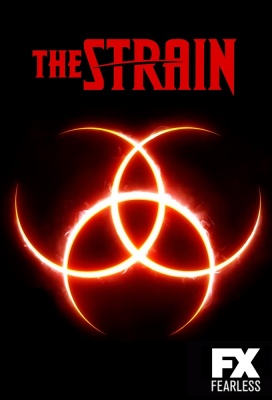
Good morning, Sean.
Sean: Good morning.
I have to say first off you are fantastic in this brilliant series and it’s just wonderful to watch every week.
Sean: Thanks, man.
You’re no stranger to television. You’ve done 24, things like that and feature films, of course the iconic Lord of the Rings trilogy. How has “The Strain” been different for you as an actor?
Sean: First of all, working with Guillermo is a unique experience for most people who are working on these shows. I would say one of the most exciting things about it is spending time with Guillermo. He’s just so full of life and creativity and his imagination and you always feel like he’s both incredibly well prepared and in the moment and able to be spontaneous, so that’s pretty great.
And then I have not in my life been a vampire guy really except when I was 16 and I worked in a movie theatre where my friend Corey Feldman’s movie The Lost Boys premiered. That was probably the height of my vampire interest. I sort of missed the rest of the wave of “Vampire Diaries” and all the way through to the recent Twilight and everything else, so being like learning vampire lore was pretty cool for me, particularly in Guillermo’s—the cosmology of vampires in Guillermo’s mind is really cool.
We don’t hate Jim. We don’t love him. We understand he’s empathetic. What do you think about him in a couple sentences?
Sean: Jim is basically a morally compromised guy and I think he has the occasional quips that he has. Comedic quips reveal some kind of personality that it might be fun to interact with, but his wife is suffering and so he’s a compromised guy basically the way I see him.
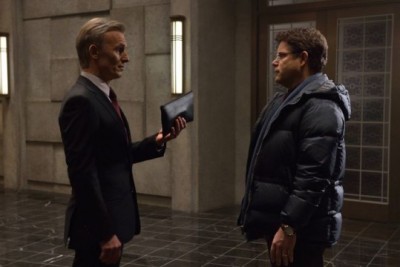
What does it mean to be part of this series?
Sean: Since being in Lord of the Rings, this pop cultural wave of franchise inclusion has swept the globe where people—these comic book franchises, bestselling book franchises, television reboot franchises-they just come in big waves. And it’s almost like being in one particular movie or one particular show isn’t enough anymore. So the fact that Guillermo and Carlton Cuse came along with this new incarnation of a vampire world meant a new franchise and so I feel I’m grateful that Guillermo reached out and swept me up in it. When you go to Comic Con, you have a team.
The convenience store episode is so memorable. Can you talk about the challenges of filming that?
Sean: Yes, it aired last night, so you guys are the ones who are responsible not to do any spoilers, but I don’t think it’s a spoiler now. Ironically the biggest challenge of it was how cold it was. Toronto suffered really the coldest winter in most of the crew members’ memory and it’s one thing to sit here in a 75º day in Los Angeles and talk about cold weather, but it was bitter cold. So you look outside at these vampires who were in their post mortem makeup and you just figured that it wasn’t too far off from where they’re going to be if they had to stand outside any longer. But the emotions of it… I was told in my very first meeting with Guillermo and Carlton, was that this character from the books, who didn’t last that long in the books, wasn’t going to last very long in the series, so they invited me to be a part of this show knowing full well that in episode eight my character is going to get killed off. So there is a little bit of the gallows anticipation that comes knowing we’re in episode five; it’s only a few episodes away now before I get to say good-bye to all my new friends.
And then when you find yourself actually in the convenience store doing the work, there is an emotional responsibility for the relationship between the characters. Blocking the scene where Eph and Nora discover that he’s been fully infected was really kind of cool. The first bit where they use the UV ray to see the worm in my face and they go and lay me down and do this sort of butcher surgery or field dressing surgery… That was all kind of cool and relatively straight forward, relatively easy.
But then when we got into blocking, Jim discovers that it’s all through my back and then I realize that the only thing to do is for them to kill me. I’m saying I don’t want to turn out like the rest of them and I don’t want go after my parents and asking Setrakian to basically explain what that is with these vampires go to the ones closest to them. It was pretty powerful emotionally and everybody had this feeling that it was exciting to be doing maybe one of the first big deaths of the show. I guess there had been others, but for me it was the big death because it was me.
And this dual feeling that the show—the characters move on and the show moves on and that was definitely a dynamic, unlike “24″ where I never knew from one week to the next what was going to happen. I open the script or sitting in the makeup bus for episode whatever it was, 13? And my character has this spectacular Sentox nerve gas death. So you’re like it’s sort of shocking, but you know anything can happen on that show and that is a very heroic death.
This one, Jim’s redemption, is kind of petty redemption. He’s I think the first one to plug in the UV ray lights and is what I think is kind of iconic where I come out of the convenience store and I’m the first one to extend my arm with the thing and burn one of the vamps with this UV light. Then of course everybody does it because Jim did it. But that feeling is yes, I don’t know. lt was cool. I was at Disneyland with my wife and kids. I had run a marathon, this Disney half marathon weekend, so we did a 10K on Tuesday and a half marathon.
So I’m walking around and my legs are sore and the kids are having a ball and I realized the episode is airing right now. I hadn’t really been paying any attention to my phone for three days, but we’re sitting on the train going through Fantasy Land and I’m seeing all these messages saying “All right, Jim, we’re going to miss you buddy. It was a sad way for you to have to go, Jim, but we tried to have fun with it. What are you going to do?”
You said that you were 16 and you were working in a movie theatre because back then you had already been a successful actor. How did you end up then working in a movie theatre and what’s it like to be a guy who’s an actor working in a movie theatre watching other people act?
Sean: It’s funny. I was looking online right before I got on the conference call and there was this article about celebrities who live below their means or something. Modest celebrities. It talked about how Leonardo DiCaprio occasionally takes a commercial flight. When I was 16, I had a car for a little bit and then my mom wanted or needed the car back, so I basically was doing summer school and night school. I really wanted to graduate with a better GPA than I had earned throughout the rest of my high school year. I would take the bus into Westwood from my dad’s place in west LA. I just worked in a movie theatre. I worked at the Bruin and Mr. Francis was my manager. I started by taking tickets at the door.
The fun story I have is with my buddy Corey. It was his movie. It was the first I guess I worked a couple of days on, it was like the end of Superman’s run. I can’t remember what it was, but anyhow and then it comes in and there’s the big premiere and Corey walks in and I’m wearing my blue blazer with my gray pants and my name tag. I used my middle name and Patrick is my middle name. I used my middle name and all the actors are standing by the concession stand and Mr. Francis, who is I don’t know, 147 at that point? He’s since passed away and he’s just a known guy; he’s a known figure—character personality and he said “Sean, you got to go pick up that popcorn.” I grabbed the broom and dust pan and I walked over. I was like “Excuse me, Corey,” and he looked and he saw me and he’s like, “Sean, what happened?”
I worked my way up through the ranks. It took all summer, but by the end of it, I was making bank drops from the box office and I cleaned the butter maker and it was fun. I remember my mom sort of being shocked that I would do that job, but I liked it. And that couple hundred buck check meant more to me than the $10,000 check that I got when I was eight because that $10,000 check went into an account that I didn’t see till I was 18 and now I was 16 and I could go spend that money. I don’t know. I count that as one of the good experiences for me.
From the pilot, they set him up and you think he’s just a bad guy. Then as the season progresses, you see Sylvia and it peels back this whole other layer of the character. There’s this human element to this struggle. Obviously he loves his family very much and would do anything for them. What was it about Jim for you as an actor that really made you want to invest in that role?
Sean: I didn’t really care. Guillermo wanted me to do it, so I wanted to do it. And then the idea for me was figure out what it was that he saw in me that he wanted me to do it. I think you could take a wide range of actors and put them in that part and it would be a Rorschach test of who that actor is. I think what he liked is that as Samwise Gamgee. I’m known for being a friend and loyal and likable, a nice guy. I think he liked the juxtaposition of somebody doing something morally questionable or wrong, who is likeable at the same time that it would make—like you said it’ll be interesting for people to have to wrestle themselves with it.
There are all these apocalyptic franchises now and the question becomes how accessible, he used the word accessible—how, he used the word relatable, but how authentic if you can really feel like what would it be like if I was in that situation, if the power went out or if the grid went out or if there’s some terrorist event or some plague, the bubonic plague is around now, Ebola or whatever. So if you’re going to use a vampire story as a metaphor for that, you want to find ways into it that feel natural.
So, what I came to like about Jim, was the way that he wanted even though he did the wrong thing. He really wanted to be of service as a CDC guy, as an aide to Eph. He wanted to help and so I liked leaning into that. Then during the autopsy scene and during this scene in the eighth episode and a few other times, something will happen and he just sort of says what everyone else is thinking in a basic way. I think that made him even more entertaining in moments for folks.
One of the most authentic things was his desire for not only “petty redemption,” but he wanted so bad to be forgiven by Eph and by Nora. Just as he almost got to that point, we had to say good-bye to him.
Sean: Yes, it’s a study on human nature because Eph is reluctantly—Nora is sympathetic to him the whole time it seems like to me. Her compassion meter has a little more sensitively, but Eph finally kind of relaxes his anger towards Jim for a little bit as Jim has acquitted himself in battle really in the moment right before that. But then it’s Jim’s mortality that really provokes Eph’s empathy and he doesn’t want a patient to die, but he doesn’t want his friend to die. You can see it. He says at one point “He’s my friend” and that as an audience member watching it, I really like that. I really like that he showed something of himself and how he really felt. He would never have been that mad at Jim if he didn’t like him, because that’s what betrayal is. Otherwise it’s just villainy.
What is one of your most fun experiences coming from the set and one of your funniest memories? Because the show is dark, how do you guys keep it light?
Sean: First there are lots of things that come to mind, but I always hit this. People don’t seem to remember. They don’t seem to talk about it very much. It was really, really, really cold. It’s a vampire show. With vampires, you’re not supposed to be able to see their breath. It was a challenge I think for the effects people to do it with how cold it was when there’s outdoor stuff and the vampires. But no, there was a moment where Corey came in on his phone playing this video game, the fighter pilot video game, so I downloaded it and the two of us with our phones or iPad mini’s in between dissecting vampires and bludgeoning the turned captain in the head with a fire extinguisher we were competing, frankly I was no match. Even over the holiday break when I had some time to practice, I showed back up and Corey absolutely dominated the game, so that was one fun thing.
And then frankly it was fun coming to work and seeing the different things that they had put together. I keep going back to the autopsy because I don’t think anything like it has ever been shown on television, a vampire autopsy. And they spent so much—it was such an expensive and intricate, I don’t know, was it a prop or special effect. We’ve been working with this actor and now we were dealing with his absolutely lifelike like corpse. It was really disturbing.
Another day we had when we’re at the airport hanger set and we come around, everybody had been filming for a few hours and they were on lunch break or something and my part started late, so I come in and I walk around and there’s nobody there, but a sea of 300 body bags all stuffed with dead bodies with the morning dew, they’d been filming all night long, over it. The lights reflecting off of it and it was really, really creepy and haunting and arresting—you pick the word and that’s the kind of stuff you’d get.
Setrakian didn’t severe Jim’s head. Are you “maybe alive”? Will we possibly have an opportunity to see a vamped out Jim or was that actually the end, period?
Sean: I’m pretty sure that Fet killed Jim properly. Setrakian reestablished that severing the head is one thing or injuring his—he goes into some description about how hitting certain bone things can hurt them this way and that way, but I think they’ve gone outside and shot them a lot. Eph and Nora are each shooting guns and killing them and Nora says he’s still coming and it’s like you got to shoot them in the head, so I don’t know how many times he pulled the trigger, but it felt like at least four or five at point blank range. I appreciate the mourning. I feel close to Jim. My favorite thing was people with the #RIPJIM. I kind of wanted to get that blown up and put that on the office wall.
Will we see Jim’s wife, Sylvia Kent again?
Sean: The vampire says to me in the train station that now my wife is consigned to die with the rest of something or other, so it’s kind of a general comment and I suppose that that could mean whatever the normal course of cancer is can take place or as the plague sweeps the world. She doesn’t have any protection from it, but anything can happen. Jim could have an evil brother who wants to come and anything can happen, but I think in terms of the way the story is giving itself to the audience, I kind of think the Jim and Sylvia of it all has moved on.
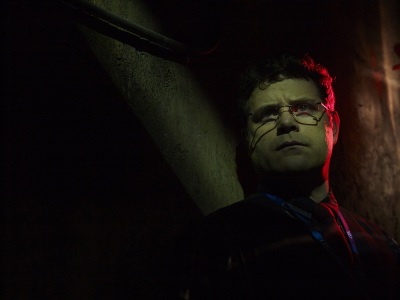
Since you’ve been a part of a few horror affiliated projects like “The Strain” and Cabin Fever, do you have the capacity to be scared of your own projects?
Sean: When you say of my own projects, it kind of makes me think that you mean of the final product and when I watch it on television.
Yes, that’s exactly what I mean.
Sean: I don’t know. I’m sure I do. It just depends on when you see it. If you see it at the premiere, maybe it’s fun to get really into it, but then you’re aware of the cameras outside. I think there are definitely moments beyond the first run of a show when you discover something late at night or if you find some reason to watch your things.
Mostly with the horror things, I find myself thinking, man, that’s cool. Like yes, I did that and if somebody else is really scared. I was never like this as a kid. I never liked the idea of watching horror movies. I always thought it was fine for people to do them, but the idea that filmmakers would say they really in a kind of amoral way like to terrorize people and see people scared and make them jump. They love that feeling of like laughing when they could make people scared and I never really liked that idea.
But now that I’ve done it a little bit, I definitely am more connected to the idea that if you do something well, if you really commit like in Cabin Fever to the idea of this horrible disease and of your role in it and the malevolence of it and if somebody responds to it, I don’t know. I get the attraction now, so I think that’s a cousin of retaining the ability to be scared by something I’ve been in, but I’m not sure. I’m more scared in the moment that we do it because I try and be invested in what we’re doing while we’re doing it, but I’m not so sure afterwards.
I find myself when people are really startled by certain things or they’re scared kind of pleasantly surprised. I like it when someone says, “That really freaked me out.” I’m like “Really? It did? Wow, that’s cool!”
If you could teach a college course of your creation, what do you think you would teach?
Sean: I think I am a teacher in my disposition. I gave a speech just now at the University of Idaho and afterwards we met with a group of drama students. I really like talking about leadership and I don’t know that I’ve led anything all that great, but I think I understand the anatomy of what it takes to be a leader. And that theme gives you entrée into virtually everything in life and human experience. I was just giving a talk at the Disney, the run Disney Expo for the Disney marathon weekend and I spoke each of the days and I talked a lot about inspiration — so yes. I think leadership. My training is in history and American literature and culture, so maybe English or something. I don’t know. I don’t know.
How did they do the sort of special effects with the worms and everything? Was it all digital or was some of it practical?
Sean: They had a brilliant piece that they put on my cheek that they could sew and unsew and it was really, really good. People really responded to it on the set and I liked working with it, so it didn’t take very long to put on at all. It was a piece that started at the top of my inner eye at the bridge of my nose and went down right under the eye all the way around the eye, basically kind of like in a half moon and then up into the hairline and down around the jaw and kind of underneath the jaw on the top of the neck and then up and around the same side of the mouth. So it almost looked like the Phantom of the Opera’s mask sort of like a miniature version of that or that with a convertible version of the Phantom of the Opera mask.
They painted it beautifully and then they added the—it was really cool was they pull the thread through it because if you’ve ever had stitches, and I’ve had lots of stitches in my life, it felt the same. When they numb you, they put a long needle in and they numb the area that they’re going to give you a stitch. You can still feel it, but it doesn’t hurt and that’s exactly what it felt like when they’re threading the cut on Jim’s face. The actual worms, though, were orange dots.
Since you did have some fair warning of your character’s demise, have you had an opportunity to look around what you’re going to do next? It sounds like you’re not looking for a franchise, but looking for something unique like this was and so what’s coming up on your agenda?
Sean: I’m sort of the opposite. When a franchise, a really good one, comes along, it’s great to be included. Actually, I meant the opposite of that, so I play the voice of Raphael in the Nickelodeon Teenage Mutant Ninja Turtle franchise and I’m one of the many Raphael’s that there have been, so I kind of like that. Maybe I’m kind of a joiner.
The one thing I would say for everybody is that I knew that I was going to die, but I didn’t know how and when I got the script for it, which was only a few weeks beforehand. I loved it! Before that, I had been a little bit kind of sullen over the fact that I was just getting to know everybody and enjoy everything and I knew I wasn’t going to be around very long. But when I saw how cool the episode was with this kind of “Butch and Sundance” battle royale out of a convenience store, then the way it was discovered on me and how the relationship is resolved, I absolutely felt like you couldn’t have asked for a better send-off. I was pretty happy with that.
I have an independent film that’s coming up called The Surface with me and Chris Mulkey. It’s a two-hander kind of a meditation on hopelessness and suicide, so there’s that. And then I also have a little animated film that I guess is being released independently called Ribbit about a poisonous tree frog, who believes he’s destined for something more than the life of a poisonous tree frog, so I play Ribbit. That’s coming out I think in September. I don’t know if it’s in wide release or not, but it’s on my radar.
And then I’ve been getting offered lots of fun things in the Sci-fi horror realm, which I haven’t grown too tired of yet, so as long as there’s something to play. I’m willing to keep thinking about that. And then I’m looking for the next thing and the next thing to get excited about.
Tell us about the trek through Guillermo del Toro’s mind. We’ve seen him from Pan’s Labyrinth and Hell Boy and everything else that he’s done. And to work with him that closely, there has to be some insight that you gathered to take that little stroll in his mind’s eye.
Sean: Now, everybody expects something huge from Guillermo every time he opens the door, so I guess what really impressed me about him is that he continues to deliver in the face of overwhelming expectations and he does it in a way that is calm and fun. I’m not sure if it’s because he lived with this book for the years that he’s lived with it and wanting to make the show the way he’s wanted to make it and then getting to make it the way he wanted to make it, or if this is just the way he is everywhere he goes. But he was just happy. Just a happy guy, and when it came to giving direction, he was very specific, very detailed. If you had a question, he would relish in being able to elaborate on an answer as though this was the most fun part of the process.
And then you’d see him off to the side having a conversation with a digital effects supervisor about what the movement of the worm was supposed to look like. He would be in this enthralled state of bliss envisioning, making the fantasy of these worms in his mind “real” in the digital space. I guess he both loves the fantastic and the real and so and those things serve each other. Those interests serve each other, so it was fun. Yes, you’re right, it was really a privilege to interact with him.
Have you ever taken a look at The Strain comics and also you’re working with Feldman on Ninja Turtles, where he’s voicing Spike?
Sean: Yes. I have seen the comic books. I haven’t read them all, but I think I understood a little of the story a little bit better when I glanced at the comic book the first time. I think I thought I get it now and that’s what that’s supposed to be, but somehow that seemed different. I listened to Ron Perlman read the audio books. That’s how I experienced “The Strain” the first time. I was riding my fancy bike in the middle of the night. I was in training and I would ride my bike all over the San Fernando Valley, which made me think of Tom Petty’s song about the vampire standing in the shadows freefalling. So the imagery, the ideas, the vocabulary for it was very richly drawn, beautifully performed by Ron Perlman; but when I saw the comic books, it seemed to me like somebody’s interpretation of it not like it was coming from the thing. I don’t know if that’s right or wrong; that’s just the way I came at it.
And yes, Feldman plays Spike. It’s fun to have my buddy Corey be my little turtle who then turns into a monster. It’s pretty fun because obviously he was around in the original time of that franchise. It seems to be the word for the interview here, but yes, it’s pretty cool.
Jim Kent, he’s a really complex, conflicted character. A lot of actors lean on personal experiences and engrained emotions to bring their characters to life in a believable fashion. Is there any part of Jim Kent that makes you say “I can totally relate to that. Let me use my own familiarity to generate a real sense of authenticity.”?
Sean: I’m probably more like Jim Kent than I am Samwise Gamgee in as much as I have to make choices in my life that I’m not an ideal literary character because people always want to know if I was like Sam and I try and embody some of those traits that Samwise has, but for Jim, I guess my technique relies on trying to feel the emotions or the moments as the character would feel it in real time. That’s how I get the closest to manifesting something that’s authentic.
Having said that, I don’t think I can help but bring a large part of myself to it. I just try not to draw one to one correlation between something in my life that I’ve experienced and something that it would evoke of an emotion that’s the same or similar to something that Jim would be feeling at that moment. I think that my empathy quotient is high enough that when I see he’s lied on behalf of his wife who’s got cancer or he’s trying to save people by plugging in a UV ray to maybe stave off some vampires or any of those feelings, I find it very easy to be empathic for those feelings. It’s easier for me on take three and four and five and whatever as you reinvest in it. It might be harder for me to try and transplant emotions that I’ve had in my life a second time and a third time and a fourth time.
I do know a certain music that seems to be able to do things, but anyhow that’s my process.
Being one of the senior actors in the show, what did you bring to the show with regards to perhaps adding your character development to the other people on the show?
Sean: We did have these story meetings, or these sort of script sessions where we really try and carve out at least a week or two ahead of time some space for the actors to sit with Guillermo and the writers and maybe whoever was directing that episode. Just an opportunity to talk about it. It’s hard when you don’t have time to rehearse and particular at the beginning of a series. I think once people’s characters are really established and you’re going towards the end of the first season or into the second season, there might be a greater dexterity for working without—you know it’s sometimes scripts might come in at the last minute and that kind of thing.
But for us they had the scripts largely finished to my knowledge before we started, but they kind of rolled them out slowly at least to me. I did participate several times in conversations where we would read through some scenes and we would say this makes sense to me or this doesn’t; “I don’t understand this” or “Can I say this this way?” and you really get to hear how each other are thinking about your characters. And they were very responsive to—there was a strong mutual respect between the creators and the actors. Everybody liked what was happening and wanted to make it better, so those were very rewarding conversations to be in.
And then I try and be myself. I try and bring my sense of comfort and confidence to the process and maybe that’s helpful to people, but at the same time I’m not immune from the anxieties of being in a new space and wanting to make sure that new space not just with a show that you’re doing, but knowing that the stakes for—and this is what’s kind of exciting, too. The stakes for a Guillermo del Toro project are high because the expectations are high. People really expect it to be great and that just means you have to try and do something new and interesting and it has to be believable.
David Bradley for example was someone that I had worked with in England on a project. And when he started bringing Setrakian to life, it was just a privilege. The guy is indefatigable, just when everyone else, when I’m freezing cold and my jaw is chattering and my fingers won’t bend, he’s smiling and having a laugh and ready to keep going, so he led by example in a way that was quiet and wonderful. I think everybody feels that way about him.
I just watched Corey coming off of his show where he’s just had an incredible turn in House of Cards and it felt like a privilege to be around him. Richard Sammel… I could go through everybody on the show and to-a-person it was a positive interaction. Kevin Durand and I have the same lawyer, so our lawyer really liked the fact that one of his clients was killing the other one of his clients. I just have so much respect for him and I love him so much and Mia is just such a really whip smart, beautiful lady, a talented lady, yes, I could keep going on. I loved everybody; I’m sorry to be full on dead now.
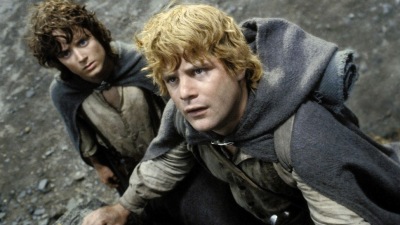
You’ve had a rich career. What are the things that draws you to certain roles that you accept either on TV or in film?
Sean I’m pretty promiscuous when it comes to what I do as an actor. Often times it comes down to whether I feel I can do it. If there’s a part of—in an animated thing, there’s a rake. I don’t mean a rake like a guy, I mean like an actual garden rake and I’m like can I see myself as the rake. Can I be the rake? And so if I feel like there’s—like I can do it credibly then I’m most of the way to doing it and it becomes about “Am I available?”
There are times when it’s clear that movies have been written and are getting made for reasons that are other than that are purely financial and people have figured out the formula. They figured out how to get money to make a movie. It’s really hard. I’m incredibly sympathetic to how hard it is to get things made, so there has to be an internal logic within the story. The dialogue has to be credible, but it doesn’t have to be Shakespeare for me to be willing to do it. I’m happy doing lower budget movies. I like doing big budget movies. It’s really just a question of if I’ve done a couple of really big things, things that have really scored, then I like the idea of scrounging around and finding low budget independent film where I can play a drug addict or where I can do something like that. If I’ve done a whole string of independent films that nobody has seen, then I find myself yearning to get back on the grid, so I think my career is very easy to interpret. It’s about working. I’m a working actor; that’s how I see myself.
Del Toro and Hogan stated that one of the reasons they had went with FX to take the series was because the network wanted the show to reflect the novels. Do you feel that your portrayal of Jim Kent is very similar to the Jim Kent in the novels or did you change him in any way?
Sean: I think that those guys wanted freedom, the freedom to make the books as close to the books that they wanted to or the freedom to move away from them if they wanted to. Understanding the essence of the books and the story of the books and the tone and the spirit of it and not shying away from the violence that’s in it and for all of those reasons, I’m sure is why and more. Creative freedom is why the lads would have chosen it.
But I don’t think that Jim Kent is exactly like the book. I think they wanted to—when I met them they knew exactly what they wanted Jim Kent to be. And when I experienced the book, I didn’t know what to make of how I might play Jim Kent, so I really was relying on the fact that they knew what they wanted and then it was my job to figure that out and give it to them. Jim’s character, I don’t think is that fully rendered in the books, so I hope I’m not telling tales out of school, but no, I think Jim is one of the characters in it that isn’t slavishly close to what’s in the book.
You’ve done a lot of these horror type movies or supernatural slightly seen science fiction type movies. Have you ever had a supernatural or paranormal experience yourself?
Sean: I am fully prepared to accept the existence of the supernatural, but I don’t—not one that I’m confident enough to relate, but I don’t think it’s fun to live this life without the possibility of the supernatural.
If there was to be any sort of supernatural beings be it ghosts, vampires, any kind of cryptic creatures, what would be your vote for the most likely of these supernatural beings to actually exist?
Sean: I’m sort of boring, so I would kind of think that whatever it is it would be very close to human beings. Some other sensory, some other like mental psychological, psycho-spiritual something or other that could cause sort of group think or collective consciousness I would think is it. I don’t necessarily expect to see apparitions and vampires walking around, but I do know that the mind is a very powerful thing and that people are very suggestible and so I remain open to that and to extraterrestrial potentiality.
Having done movies and TV and given what a lot of people think is the golden age of TV, do you have any preference at this point for doing TV over movies or movies over TV?
Sean: I really don’t. I really don’t. I like to change gears, so the rhythms of a television show play to my own—I like the rhythms of television. I like the speed of it. I like the dynamism of it, but I also like the sense of detail and immersion that you get in a film, so to me my work doesn’t radically change based on the medium as much as it does relative to the story and the characters.
I’ll tell you I’d like to do comedies right now. I’ve just been shot in the head by Kevin Durand and one of the great TV franchises of this new decade is leaving me, so I’d love to flip a switch and start working with a laugh track.
You mentioned earlier that you really liked seeing the hash tag RIPJIM going around. Do you keep up with fan feedback on your projects or are you the sort of actor that prefers to just let it lie and however it falls, that’s how it falls?
Sean: I like scanning through the Twitter feed now and then, but I don’t have a consistency to it. I think every now and then I’ll get really focused or there’ll be some reason if I’m working on a kickstarter campaign or if there’s something that isn’t going to get promoted anywhere else that I really like whether it’s something I’m doing or something somebody else is doing, I get in there. A lot of people have a charitable or other very emotional things that they want or they ask or something like that and I find it really hard to pick and choose at that, so I try and release myself from any obligation to that, but every now and then I’ll find something that I feel like doing it, so a little bit.
I have a talk radio show on TradioV called Vox Populi Radio. It’s a political radio show, so definitely once a week, I find myself digging in and hoping and wanting people that are paying attention to the conversations that we’re having and trying to promote it and stoke people’s interest. During those moments, I’m acutely aware of what people are thinking and saying.
What I noticed is with the people that respond to me or whatever, it’s a very similar thing. It’s very, very rare. I think I might have only blocked one or two people in the entire time I’ve had Twitter because people are just basically decent and have thoughts. Even if somebody is critical, I usually agree with them. They usually have a point that they’re making that I don’t think is too far off, but I don’t live and die by it.
Thanks so much to everyone for joining us today and especially Sean Astin. We greatly appreciate your time.
Sean: Thank you. I enjoyed it.
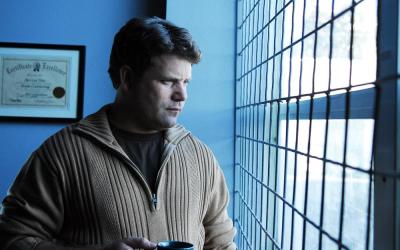
The saga of man vs. vampire continues. Tune in every Sunday night at 10 p.m. Eastern/Pacific on FX.
Official web site: http://www.fxnetworks.com/thestrain
Facebook: https://www.facebook.com/TheStrainFX
Twitter: @TheStrainFX
Check out Sean’s great radio show online!
Sean’s tv radio show Vox Populi: http://www.voxpopuliradio.com/
Twitter: @SeanAstin
Courtesy of FX
